Sourav Pan
Transcript
Hey everyone! Today we’re diving into the fascinating world of prions. So what exactly is a prion?
Simply put, a prion is a misfolded protein that can cause other normal proteins to misfold too. It’s like a troublemaker that convinces good proteins to become troublemakers as well.
Let me show you the difference. Here’s a normal, healthy protein with its proper shape and structure.
And here’s a prion – the same protein but misfolded into an abnormal, dangerous shape.
Now here’s where it gets really interesting. Think of it like a domino effect, but with proteins!
When the prion touches a normal protein, it causes that protein to change shape and become misfolded too. This creates a chain reaction.
These misfolded proteins don’t just disappear. They accumulate and build up in the brain and other tissues over time.
This accumulation leads to cellular damage and ultimately disease. The normal function of cells becomes disrupted.
So remember, prions are misfolded proteins that cause other proteins to misfold in a dangerous chain reaction. This simple concept is the foundation for understanding these fascinating but dangerous biological entities.
When we compare prions to other disease-causing pathogens, we discover something truly remarkable. Let’s look at the major types of pathogens that can make us sick.
Bacteria, viruses, and fungi all share one crucial characteristic – they contain genetic material. Bacteria and fungi have DNA, while viruses can have either DNA or RNA. This genetic code acts like their instruction manual.
But prions? They’re completely different! Prions contain absolutely no DNA or RNA whatsoever. They are purely protein – nothing else. This makes them utterly unique in the world of infectious agents.
This fundamental difference has huge implications. Traditional sterilization methods work by destroying genetic material – the DNA and RNA that pathogens need to survive and reproduce.
But prions have no genetic material to destroy! It’s like trying to stop a rumor. With other pathogens, you can delete their source code, their genetic instructions. But with prions, there is no source code to delete!
This is why prions are so incredibly resistant to traditional sterilization methods. Heat, radiation, and chemical disinfectants that easily destroy other pathogens often have little effect on prions.
Here’s your key takeaway: Prions are unique among all infectious agents because they are purely protein-based and contain no genetic material whatsoever. This makes them extraordinarily resistant and fundamentally different from any other pathogen we know.
The word ‘prion’ isn’t just a random scientific term. It has a very specific origin that tells us exactly what these mysterious entities are.
This term was coined by Dr. Stanley Prusiner, a brilliant scientist who dedicated his career to understanding these protein-based infectious agents.
The word ‘prion’ is actually an acronym. It stands for ‘proteinaceous infectious particle’ – and each part of this phrase tells us something important about what prions are.
Let’s break this down word by word. ‘Proteinaceous’ means it’s made of protein – not DNA, not RNA, just protein. This was revolutionary because no one thought proteins alone could be infectious.
‘Infectious’ means it can spread from one organism to another, or even from one protein to another within the same organism. This spreading ability makes prions particularly dangerous.
And ‘particle’ simply means it’s a discrete unit – a single entity that can be studied and identified. Together, these three words perfectly describe what a prion is.
Dr. Prusiner’s groundbreaking work on prions was so significant that he was awarded the Nobel Prize in Physiology or Medicine in 1997. His research opened up an entirely new field of study.
The term ‘prion’ is brilliant because it immediately tells us the key characteristics: it’s protein-based and infectious. This simple word revolutionized how we think about disease-causing agents.
Now let’s meet the good guy in our prion story: PrP to the C, the normal cellular form of the prion protein. This is the healthy version that our bodies naturally produce and need.
PrP to the C has a special structure. It’s mostly made up of alpha helices – these are like spiral staircases made of protein. This coiled structure is stable and allows the protein to do its job properly.
This normal prion protein is found throughout our bodies, especially in our brain and nervous system. It’s a natural part of our cellular machinery.
Scientists believe PrP to the C has three main jobs in our bodies. Let’s look at each one.
First, it helps with cell signaling. Think of it like a cellular telephone system, helping cells communicate important messages to each other.
Second, it helps with cell adhesion. This means it acts like cellular glue, helping cells stick together in the right way to form healthy tissues.
Third, and very importantly, it provides neuroprotection. PrP to the C acts like a bodyguard for our brain cells, helping protect them from damage and keeping our nervous system healthy.
Here’s the key takeaway: PrP to the C is the good guy. It’s the normal, healthy form of prion protein that our bodies produce and actually need to function properly. Remember this, because next we’ll meet its dangerous cousin.
Now we meet the villain of our story: PrP superscript S-C, the misfolded, disease-causing form of the prion protein. This is where things go terribly wrong.
The key difference lies in the protein structure. While normal PrP-C has mostly alpha-helices – think of them as coiled springs – the misfolded PrP-Sc is dominated by beta-sheets, which are flat, rigid structures.
This structural change from alpha-helices to beta-sheets might seem small, but it has catastrophic consequences. The beta-sheet structure makes PrP-Sc incredibly stable and resistant to breakdown.
Normal cellular enzymes that should break down proteins simply cannot digest PrP-Sc. It resists high temperatures, radiation, and even strong disinfectants. This makes it nearly indestructible.
Here’s the key takeaway: PrP superscript S-C is the misfolded, disease-causing form of the prion protein. Its beta-sheet structure makes it extremely resistant to breakdown, which is why prion diseases are so devastating and difficult to treat.
PrP-Sc is extremely dangerous because of its unique beta-sheet structure. Unlike normal proteins, this misfolded form has a structure that makes it nearly indestructible.
Normally, our cells have enzymes called proteases that break down old or damaged proteins. These molecular scissors constantly clean up proteins that are no longer needed.
But here’s the problem: these enzymes cannot break down PrP-Sc! The tight beta-sheet structure is too stable and resistant. The enzymes bounce off, unable to cut through this misfolded protein.
Since PrP-Sc cannot be broken down, it starts to accumulate. These resistant proteins begin to stick together, forming larger and larger clumps.
These clumps grow into long, twisted structures called amyloid fibrils. Think of them like protein spaghetti that tangles up inside cells, but much more dangerous.
These amyloid fibrils are toxic to cells. They disrupt normal cellular processes, damage cell membranes, and interfere with essential functions. Eventually, this leads to cell death.
Here’s the key takeaway: PrP-Sc is dangerous because it resists degradation and forms toxic clumps. Normal cellular cleanup can’t remove it, so it accumulates and kills brain cells.
Prions have a completely unique way of replicating that’s unlike anything else in biology. They don’t use DNA or RNA like viruses and bacteria do.
Instead, the misfolded prion protein PrP-Sc acts like a template that forces normal PrP-C proteins to change their shape and become misfolded too.
When a misfolded PrP-Sc protein comes into contact with a normal PrP-C protein, something remarkable happens. The misfolded protein acts like a corrupting influence.
The normal protein is forced to change its shape, transforming from its healthy form into the same misfolded structure. It’s like the bad protein is teaching the good protein how to be bad!
Now we have two misfolded proteins instead of one. But it doesn’t stop there – this creates a chain reaction!
Each newly converted protein can now convert other normal proteins. One becomes two, two becomes four, four becomes eight, and so on. The number of misfolded proteins grows exponentially!
This is why prion diseases are so devastating. It’s like a zombie virus, but for proteins! One bad protein can eventually convert millions of good proteins in the brain.
The key takeaway is this: PrP-Sc converts normal PrP-C into more PrP-Sc through direct contact and conformational change. This creates an unstoppable chain reaction that spreads throughout the brain tissue.
Now that we understand the dangerous misfolded prion, let’s explore what the normal prion protein, PrP-C, actually does in healthy cells.
Here’s something fascinating: scientists are still figuring out exactly what PrP-C does! Even though we know it’s important for normal cell function, its precise role remains one of biology’s ongoing mysteries.
However, scientists have identified three main areas where PrP-C likely plays important roles. Let’s explore each of these functions.
First is cell signaling – this is how cells communicate with each other. Think of PrP-C as helping cells send and receive important messages, like a cellular telephone system.
Second is cell adhesion – this helps cells stick together properly. PrP-C acts like cellular glue, helping tissues maintain their structure and integrity.
Third is neuroprotection – PrP-C helps protect nerve cells from damage. Think of it as a cellular bodyguard, shielding neurons from harmful substances and stress.
So while we’re still learning about PrP-C’s exact role, we know it’s likely involved in helping cells communicate, stick together, and protecting our precious nerve cells. This makes the misfolding into the dangerous PrP-Sc form even more concerning.
Prions are responsible for a devastating group of diseases called Transmissible Spongiform Encephalopathies, or TSEs. These are fatal neurodegenerative diseases that attack the brain and nervous system.
To understand TSEs, we need to compare a healthy brain with one affected by prion disease. In a healthy brain, nerve cells are tightly packed and well-organized.
In contrast, a brain affected by TSE shows a characteristic spongy appearance. The tissue develops holes where brain cells have died, creating a Swiss cheese-like pattern that gives these diseases their name.
TSEs affect both humans and animals. In humans, we see diseases like Creutzfeldt-Jakob Disease, Fatal Familial Insomnia, and Kuru. In animals, we find Mad Cow Disease, Scrapie in sheep, and Chronic Wasting Disease in deer and elk.
All TSEs share several devastating characteristics. They are always fatal with no cure currently available. They have long incubation periods, sometimes taking years before symptoms appear. They cause progressive brain degeneration, creating the characteristic spongy appearance, and they’re all caused by misfolded prion proteins.
The key takeaway is that prions cause TSEs, which are fatal brain diseases characterized by the formation of spongy holes in brain tissue due to cell death. Understanding TSEs is crucial because they represent a unique class of infectious diseases caused entirely by misfolded proteins.
Creutzfeldt-Jakob Disease, or CJD, is the most well-known human prion disease. This rare but devastating neurological condition affects only one to two people per million each year, but understanding its different forms is crucial for medical science.
CJD comes in four distinct types, each with different causes and characteristics. Understanding these differences helps doctors diagnose and track the disease more effectively.
Sporadic CJD is by far the most common form, accounting for about 90 percent of all cases. As the name suggests, it occurs randomly without any known cause or risk factors. Scientists believe it happens when the normal prion protein spontaneously misfolds.
Familial CJD represents 5 to 10 percent of cases and runs in families. This inherited form is caused by mutations in the prion protein gene that are passed down from parents to children. If you inherit the mutation, you have a high chance of developing the disease.
Iatrogenic CJD is extremely rare and occurs when prions are accidentally transmitted through medical procedures. This can happen through contaminated surgical instruments, corneal transplants, or growth hormone injections. Modern sterilization methods have made this form very uncommon.
Variant CJD is also very rare and is linked to exposure to bovine spongiform encephalopathy, commonly known as mad cow disease. This form typically affects younger people and has a longer disease course than other types of CJD.
The key takeaway is that CJD represents the most important human prion disease, with four distinct forms that differ in their causes and transmission routes. While all forms are fatal, understanding these differences is crucial for prevention, diagnosis, and research into potential treatments.
Fatal Familial Insomnia, or FFI, is one of the most devastating human prion diseases. Unlike other prion diseases that primarily affect memory and cognition, FFI specifically targets the brain’s ability to sleep.
FFI specifically attacks the thalamus, a small but crucial brain structure that controls our sleep-wake cycles. When prions damage the thalamus, patients gradually lose their ability to sleep normally.
The disease progresses through distinct stages. Patients start with normal sleep, then develop mild insomnia, which worsens to severe insomnia, and finally complete inability to sleep. This progression typically occurs over several months.
FFI is an inherited disease, passed down through families. If one parent carries the genetic mutation, each child has a fifty percent chance of inheriting the disease. This is why it’s called ‘familial’ insomnia.
The timeline of FFI is tragically predictable. Sleep problems typically begin in middle age, around forty to sixty years old. Within three to six months, patients develop severe insomnia. Cognitive decline follows, and the disease is always fatal, usually within twelve to eighteen months of onset.
The key takeaway about Fatal Familial Insomnia is that it’s a rare, inherited prion disease that specifically destroys the brain’s ability to sleep. It progresses rapidly and is always fatal, making it one of the most devastating neurological conditions known to medicine.
Kuru is a devastating prion disease that was discovered in the remote highlands of Papua New Guinea. This disease provides us with crucial insights into how prions can spread between humans.
Kuru was transmitted through a very specific cultural practice. The Fore people of Papua New Guinea practiced mortuary cannibalism as part of their funeral rituals, where they would consume the bodies of deceased family members.
Kuru causes severe neurological symptoms that progressively worsen over time. The name ‘kuru’ actually means ‘to shake’ in the Fore language, which perfectly describes one of its main symptoms.
The study of Kuru was groundbreaking because it proved that prion diseases could be transmitted between humans through consumption of infected tissue. This discovery helped scientists understand how prions spread and led to important safety measures in medical procedures.
Today, Kuru has virtually disappeared as the cannibalistic practices ended in the 1950s. However, the lessons learned from studying this disease continue to inform our understanding of prion diseases and help protect public health worldwide.
Scrapie is one of the most well-known animal prion diseases, primarily affecting sheep and goats. It was actually one of the first prion diseases ever discovered and studied by scientists.
The name ‘scrapie’ comes from the characteristic behavior of infected animals. Sheep and goats with this disease compulsively scrape and rub their skin against fences, trees, and other objects.
This scraping behavior is so intense that it often causes the animals to lose patches of wool or hair, creating bare spots on their skin. The constant rubbing can even cause wounds and infections.
Scrapie has several key characteristics that make it a serious concern for farmers and veterinarians. It primarily affects sheep and goats, causing the distinctive scraping behavior we just saw.
Like all prion diseases, scrapie causes progressive neurological decline. The animals gradually lose coordination, develop tremors, and eventually become unable to walk or eat properly.
Unfortunately, scrapie is always fatal once symptoms appear. There is currently no cure or treatment available for this devastating disease.
One of the most concerning aspects of scrapie is that it can spread between animals, particularly through contaminated environments and possibly through direct contact.
Scrapie holds special historical significance in prion research. It was first described over 250 years ago, making it one of the oldest known prion diseases.
Scientific research on scrapie provided the foundation for understanding other prion diseases, including BSE in cattle and Creutzfeldt-Jakob disease in humans.
To summarize, scrapie is a fatal prion disease that affects sheep and goats. It gets its name from the characteristic scraping behavior that infected animals display. This disease has been historically important in helping scientists understand prion diseases in general.
Bovine Spongiform Encephalopathy, commonly known as BSE, is one of the most well-known animal prion diseases. You might recognize it better by its popular name: Mad Cow Disease.
BSE specifically affects cattle, causing severe neurological symptoms. The disease gets its name from the spongy appearance it creates in the brain tissue of infected cows.
In BSE, misfolded prion proteins accumulate in the cow’s brain, creating holes that give the tissue a sponge-like appearance. This leads to progressive neurological deterioration.
The most concerning aspect of BSE is that it can be transmitted to humans through consumption of contaminated beef products. When humans consume meat from BSE-infected cattle, they can develop a form of prion disease called variant Creutzfeldt-Jakob Disease.
The key takeaway is that BSE, commonly known as Mad Cow Disease, is a serious prion disease that affects cattle and poses a risk to human health through the food chain. This cross-species transmission makes BSE particularly important from a public health perspective.
Understanding BSE helps us appreciate how prion diseases can cross species barriers and why food safety measures are so crucial in preventing human infection.
Chronic Wasting Disease, or CWD, is a devastating prion disease that specifically targets members of the deer family, known as cervids.
CWD affects four main types of animals: white-tailed deer, elk, moose, and reindeer. These animals are all part of the cervid family and share similar biological characteristics that make them susceptible to this prion disease.
One of the most concerning aspects of CWD is how easily it spreads between animals. The disease can be transmitted through direct contact, contaminated environments, and even through saliva, urine, and feces.
Watch how the infection spreads from one animal to another. This chain reaction can devastate entire herds and populations in the wild.
CWD causes severe symptoms that progressively worsen over time. The disease gets its name from the dramatic weight loss, or wasting, that affected animals experience.
Infected animals show dramatic weight loss, loss of coordination, behavioral changes like loss of fear of humans, and excessive drooling. Unfortunately, like all prion diseases, CWD is always fatal.
The key takeaway is that Chronic Wasting Disease is a highly contagious prion disease that is spreading among deer and related species, posing a significant threat to wildlife populations across North America.
Prion diseases have a very unique and concerning symptom pattern that makes them particularly dangerous and difficult to detect early.
The most striking feature of prion diseases is their timeline. They have an extremely long asymptomatic phase, where infected individuals show no symptoms whatsoever for years or even decades.
But once symptoms finally appear, the neurological decline is devastatingly rapid, typically progressing over just months rather than years.
When symptoms do emerge, they affect multiple aspects of brain function. Let’s examine the main categories of symptoms that patients experience.
The brain becomes progressively damaged as misfolded prions accumulate, leading to a characteristic set of neurological symptoms.
Memory loss is often one of the first noticeable symptoms. Patients have difficulty forming new memories and may struggle to remember recent events, though older memories might remain intact initially.
Mood disturbances are also common and can be quite severe. Patients may experience depression, anxiety, irritability, or dramatic personality changes that are distressing for both patients and families.
Severe fatigue is another hallmark symptom. This isn’t just normal tiredness – patients experience overwhelming exhaustion and may develop serious sleep disturbances or insomnia.
Visual problems can range from blurred vision and difficulty focusing to more severe symptoms like visual hallucinations, where patients see things that aren’t really there.
As the disease progresses, these symptoms worsen rapidly and additional neurological problems emerge, including coordination difficulties, speech problems, and eventually complete disability.
The key takeaway about prion disease symptoms is this critical pattern: a long incubation period where the disease silently damages the brain, followed by rapid, devastating neurological decline once symptoms finally appear.
This pattern makes prion diseases particularly tragic – by the time symptoms are noticeable, extensive brain damage has already occurred, and the disease progresses too rapidly for current treatments to be effective.
Acquired prion diseases occur when someone is exposed to infectious prion proteins from an external source. Unlike sporadic or genetic forms, these diseases come from outside the body.
The first way to acquire prion diseases is through medical procedures. Contaminated surgical instruments can transfer infectious prions from one patient to another.
Prions are extremely resistant to standard sterilization methods. Even after normal cleaning, surgical instruments can still carry infectious prions that cause disease in the next patient.
The second way is through eating contaminated meat. This happened during the BSE outbreak, also known as Mad Cow Disease, when people ate beef from infected cattle.
When someone eats contaminated meat, the prions can cross from the digestive system into the nervous system, eventually reaching the brain and causing variant Creutzfeldt-Jakob Disease.
Here are some real examples of acquired prion diseases. The most famous case was variant CJD from the Mad Cow Disease outbreak in the UK during the 1990s.
Medical transmission has occurred through contaminated growth hormone injections and surgical instruments that weren’t properly sterilized between patients.
The key takeaway is that acquired prion diseases always result from exposure to external infectious prions. This can happen through medical procedures or by eating contaminated food. Understanding these transmission routes helps us prevent future cases.
Sporadic prion diseases represent one of the most mysterious aspects of these conditions. Unlike acquired or genetic forms, sporadic cases occur completely without warning or known cause.
In medical terms, sporadic means occurring randomly without any identifiable cause. These cases appear out of nowhere, affecting people who have no family history of prion disease and no known exposure to infectious prions.
Imagine normal prion proteins functioning peacefully in brain cells. Then, without any external trigger, one protein spontaneously changes its shape.
This single misfolding event happens randomly – like a molecular accident. The protein changes from its normal alpha helix structure to the dangerous beta sheet form.
Once this happens, the misfolded protein begins converting nearby normal proteins, starting the deadly chain reaction that leads to disease.
Sporadic Creutzfeldt-Jakob Disease represents the vast majority of human prion disease cases. About 90 percent of all CJD cases are sporadic, affecting roughly one to two people per million each year.
These cases typically affect older adults, usually between ages 60 and 70, and occur in people with no family history of the disease and no known exposure to infectious prions.
The sporadic nature of these diseases remains one of the biggest mysteries in medicine. Scientists still don’t understand why some people’s prion proteins spontaneously misfold while others remain healthy their entire lives.
This randomness makes sporadic prion diseases particularly frightening and difficult to study. There are no warning signs, no way to predict who will be affected, and currently no way to prevent these spontaneous events.
The key takeaway is that sporadic prion diseases arise spontaneously without any known cause. This makes them unpredictable and represents one of the most challenging aspects of prion disease research.
Some prion diseases are not acquired from external sources, but are instead inherited through our genes. These genetic prion diseases are caused by mutations in the PRNP gene that codes for the prion protein.
The PRNP gene contains the instructions for making the prion protein. In genetic prion diseases, this gene contains mutations – changes in the DNA sequence that alter how the protein is made.
Genetic prion diseases follow an autosomal dominant inheritance pattern. This means that if one parent carries the mutation, each child has a fifty percent chance of inheriting it and developing the disease.
Fatal Familial Insomnia, or FFI, is a classic example of a genetic prion disease. It’s caused by a specific mutation at codon 178 of the PRNP gene. This mutation affects the brain regions that control sleep, leading to progressive insomnia and eventually death.
The key takeaway is that genetic prion diseases are caused by inherited mutations in the PRNP gene. These mutations make the prion protein more likely to misfold, leading to the devastating chain reaction that characterizes all prion diseases.
Here’s some excellent news in the fight against prion diseases. Recent advances in diagnostic methods are revolutionizing how doctors can detect these challenging conditions.
Two major breakthroughs are leading this diagnostic revolution. First, improvements in MRI technology, specifically diffusion-weighted imaging, allow doctors to see brain changes much earlier than before.
The second breakthrough is RT-QuIC technology, which stands for real-time quaking-induced conversion. This innovative test can directly detect misfolded prion proteins in patient samples, providing much more accurate results.
These diagnostic improvements represent a major step forward. Where doctors once had to wait for late-stage symptoms to make a diagnosis, they can now detect prion diseases much earlier in the disease process.
Early diagnosis is absolutely crucial because it opens the door for potential future treatments. The sooner we can identify prion diseases, the better chance we have of developing effective interventions before irreversible brain damage occurs.
The key takeaway here is clear: new diagnostic tools are allowing for earlier and more accurate detection of prion diseases. This represents real hope for patients and families affected by these conditions, as early detection is the first step toward effective treatment.
Scientists have developed an exciting new approach to treating prion diseases using gene-editing therapy. This breakthrough could change how we fight these devastating conditions.
The technique uses something called base editing to modify genes. Think of it like a precise molecular scissors that can change specific letters in the genetic code.
The goal is to reduce the amount of prion protein produced in the brain. Before treatment, cells produce high levels of prion proteins, including the dangerous misfolded ones.
After gene editing treatment, the cells produce much fewer prion proteins. This dramatically reduces the risk of misfolding and disease progression.
In mouse studies, this gene editing approach showed remarkable results. Mice that received the treatment lived about fifty percent longer than untreated mice with prion disease.
The most exciting part is that this could be a one-time treatment that works for all types of prion diseases. Instead of ongoing medication, patients might need just a single gene therapy session.
The key takeaway is that gene-editing therapy represents a revolutionary approach to prion diseases. By targeting the source of the problem and reducing prion protein production, it offers hope for a true treatment rather than just managing symptoms.
Clinical trials represent the crucial bridge between laboratory discoveries and real treatments for patients with prion diseases. These carefully designed studies are our best hope for finding effective therapies.
Clinical trials follow a systematic three-phase approach. Phase one focuses on safety with small groups. Phase two tests effectiveness with larger groups. Phase three compares the new treatment to existing standards with thousands of participants.
ION-717 is an antisense oligonucleotide currently in clinical trials. This innovative treatment works by blocking the messenger RNA that tells cells to make prion proteins, effectively reducing the production of both normal and disease-causing prions.
Conducting clinical trials for prion diseases presents unique challenges. These are rare diseases with few available patients. The rapid progression leaves limited time for testing. The lack of reliable biomarkers makes it difficult to measure improvement. And the fatal nature raises serious ethical considerations.
Despite the challenges, clinical trials are bringing real hope to patients and families affected by prion diseases. Multiple trials are currently underway around the world. ION-717 and other treatments are showing promising early results. International collaboration is accelerating research, and regulatory agencies are creating faster approval pathways for these urgent medical needs.
Clinical trials represent our best path forward in the fight against prion diseases. Through careful scientific testing of treatments like ION-717, researchers are working to transform these devastating diagnoses into manageable conditions.
The future of prion research holds great promise as scientists work toward three critical goals: improving early diagnosis, developing effective therapies, and creating better prevention strategies.
Advanced diagnostic methods like MRI diffusion-weighted imaging and real-time quaking-induced conversion tests are making it possible to detect prion diseases much earlier than before. Earlier detection means we can potentially intervene sooner and improve patient outcomes.
Gene-editing therapies are showing remarkable promise, with treatments extending lifespan by fifty percent in mouse models. Meanwhile, clinical trials for drugs like ION-717 are testing new approaches to reduce prion protein production in human patients.
International collaboration is accelerating progress, with events like the Prion 2025 Congress bringing together researchers, clinicians, and industry experts from around the world to share breakthroughs and coordinate efforts.
The future of prion research is bright, with scientists working toward three key goals: early detection of diseases before symptoms appear, effective treatments that can slow or stop disease progression, and prevention strategies to protect public health. Through continued collaboration and innovation, we’re moving closer to conquering these challenging diseases.
Study Materials
No study materials available for this video.
Helpful: 0%
Related Videos
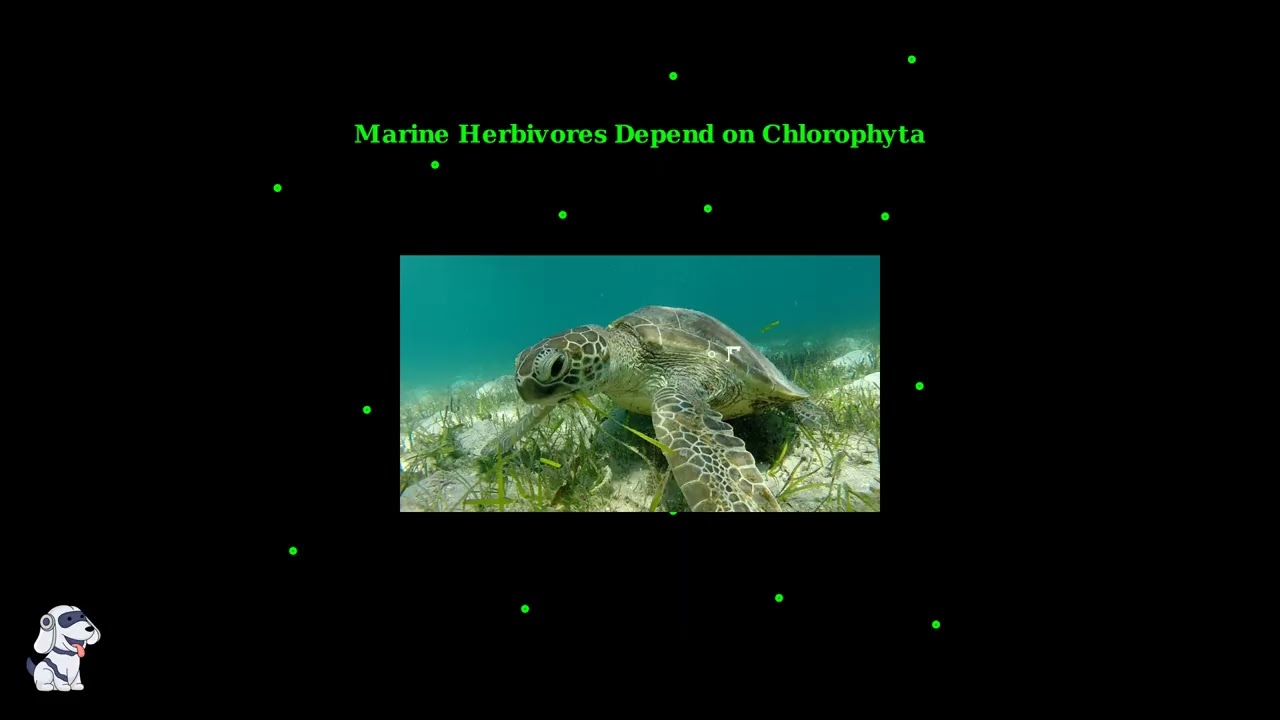
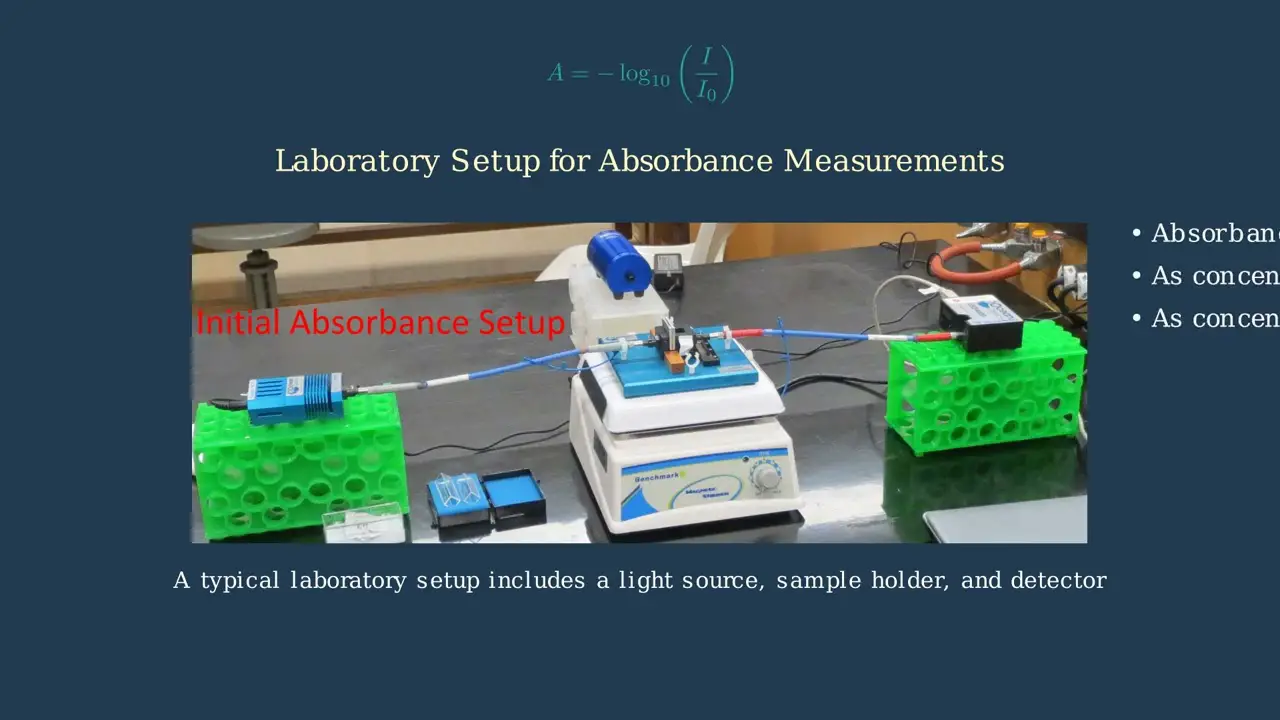
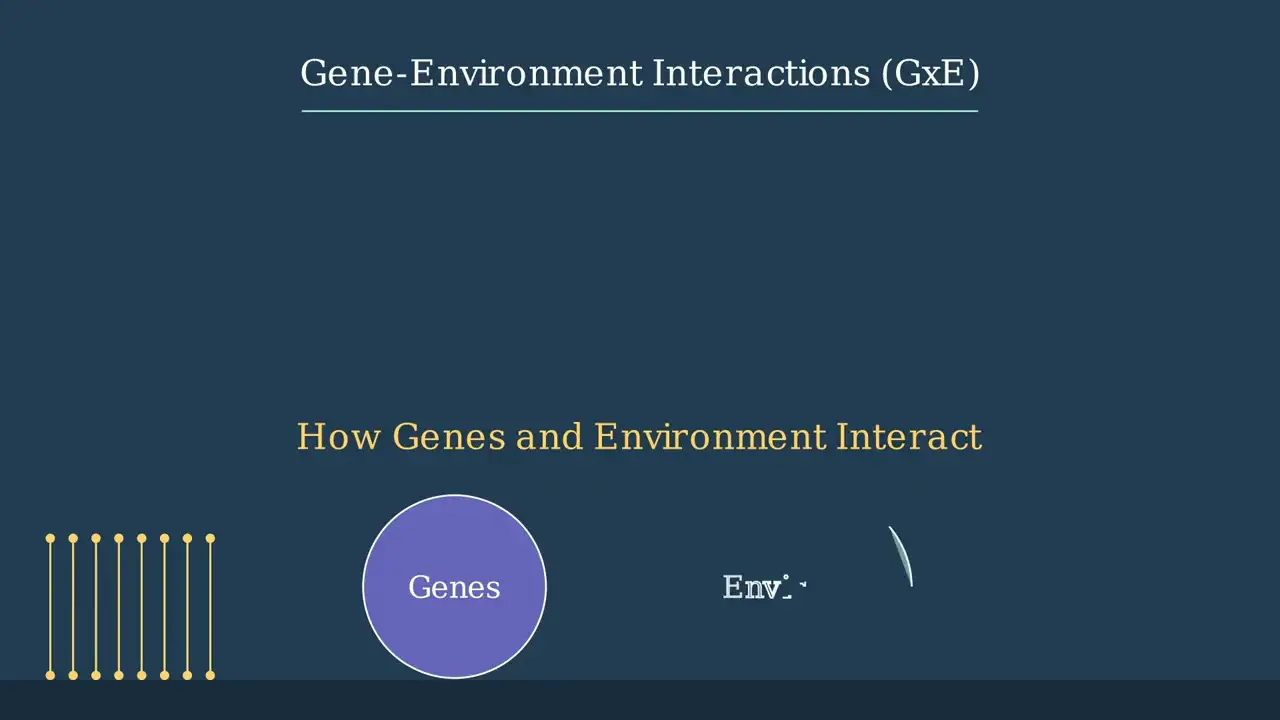


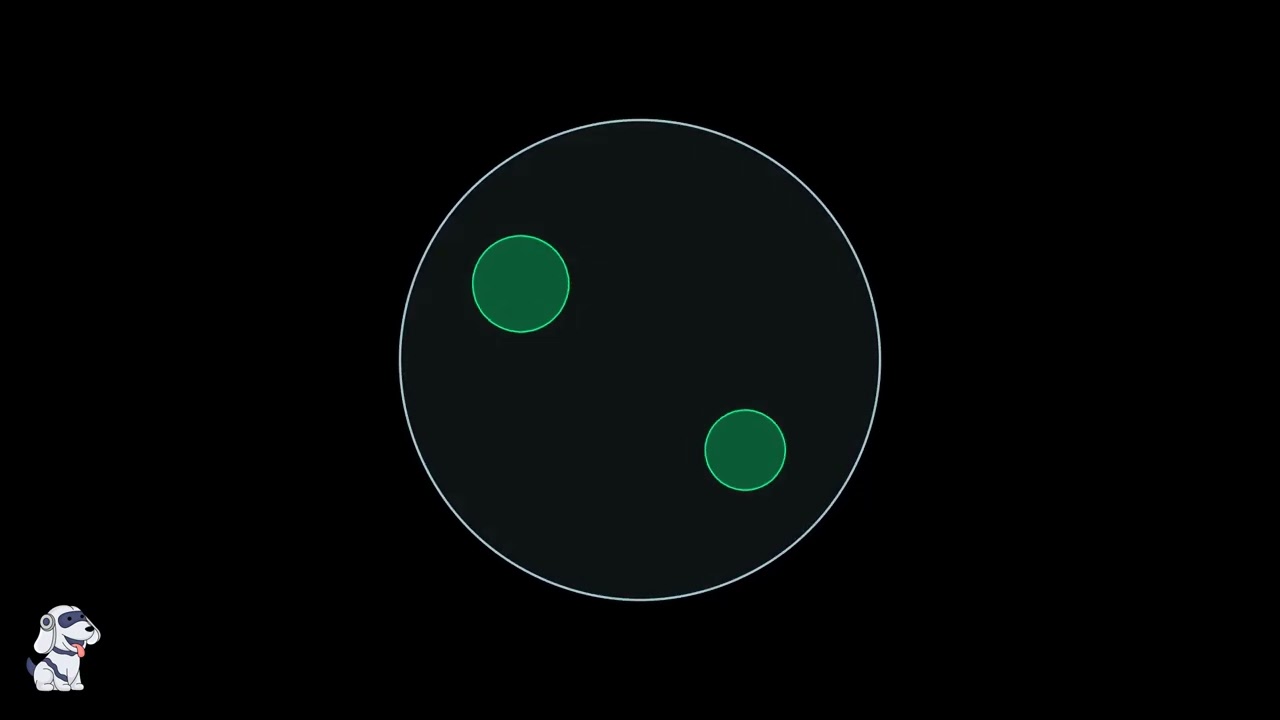
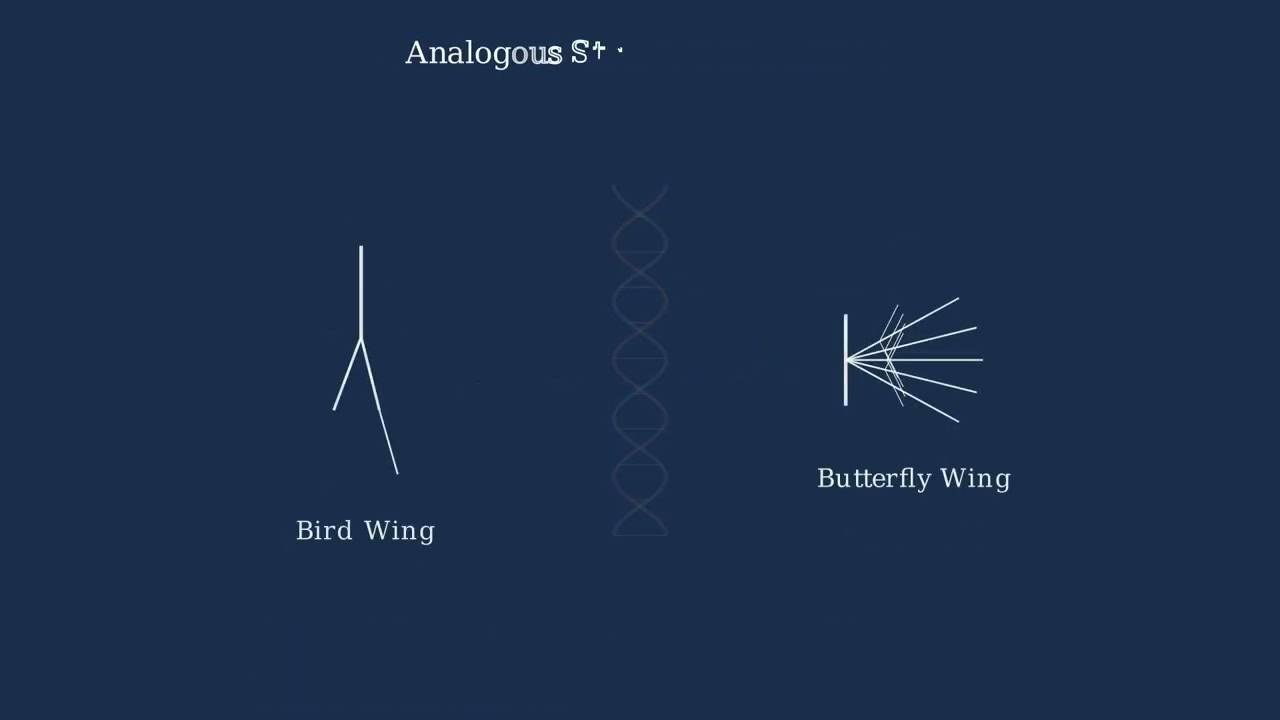
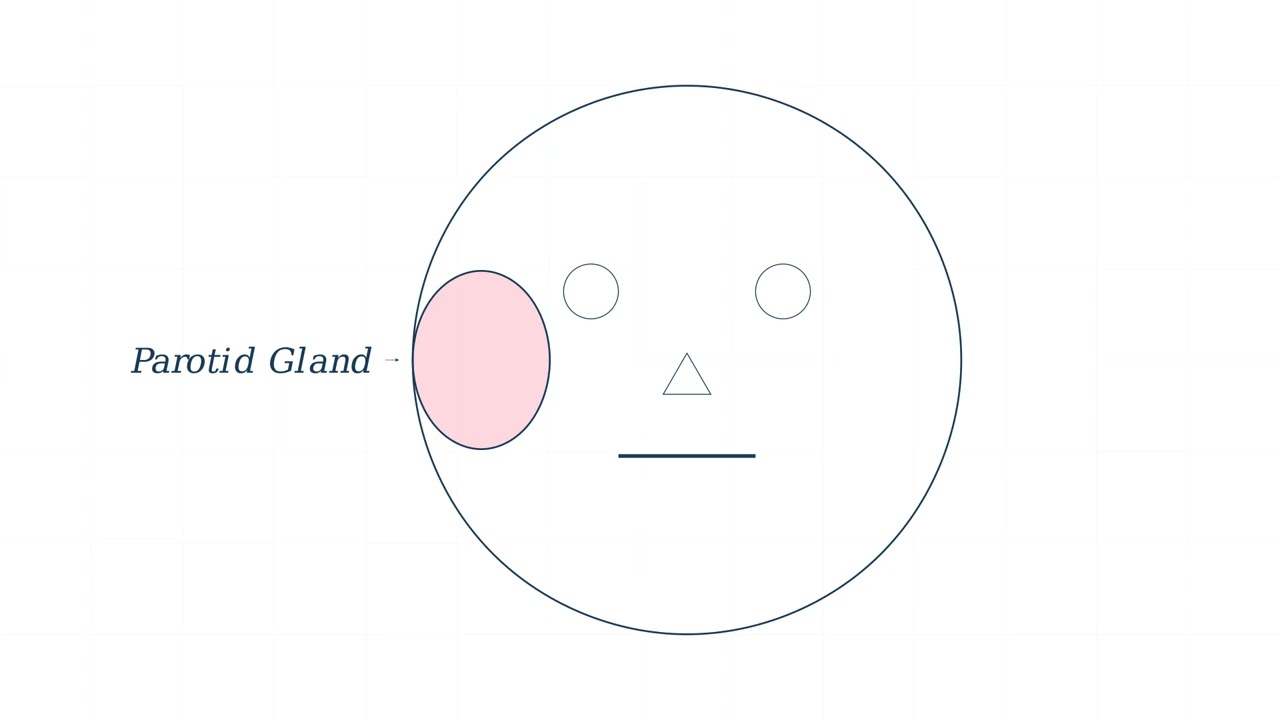


- Text Highlighting: Select any text in the post content to highlight it
- Text Annotation: Select text and add comments with annotations
- Comment Management: Edit or delete your own comments
- Highlight Management: Remove your own highlights
How to use: Simply select any text in the post content above, and you'll see annotation options. Login here or create an account to get started.